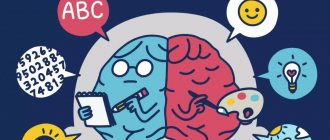Creative thinking is not a talent, but a skill.
This is true. After all, it can be learned. TRIZ, Lateral Thinking, Design Thinking, CRAFT.
Lateral gap
When coming up with an idea, we want to follow the beaten path. Our brain puts all incoming information into patterns - this greatly simplifies our life, but prevents us from inventing new solutions. The essence of the lateral technique (the author of the term is the British psychologist Edward de Bono, who developed many algorithms for generating new ideas) is to overcome stereotyped thinking. The technique is based on a three-stage algorithm.
Point A - we focus on the task, that is, we select one aspect of it. The narrower the focus, the easier it is to create something new. Do not overload him with information: this inhibits creative thinking.
Let's say we need to come up with a restaurant concept. Focus options:
- people order food in a restaurant;
- people go to restaurants to avoid eating at home;
- in a restaurant people choose food from the menu.
Point B - we generate a lateral gap, a set of absurd provocative ideas for the task. There are 6 basic methods, they are easier to explain with an example.
- Addition: focus - people order food; gap - people order food and dishes.
- Inversion: focus - people go to a restaurant so as not to eat at home; gap - people go to restaurants to eat at home.
- Exception: focus - in a restaurant people choose from the menu; gap - the restaurant does not have a menu.
- Hyperbolization: focus - people in a restaurant are sitting on chairs and sofas; gap - people in a restaurant are sitting on the same chair.
- Replacement: trick - people order food from the waiter; gap - people order food from friends.
- Rearrangement: focus - people pay for food to sit in a restaurant; gap - people sit in a restaurant so as not to pay for food.
This is the stage of breaking the template: the resulting ideas cannot be applied in reality. To “ground” an absurd solution, at point C we establish connections with reality. There are several ways here too:
- we extract its basic principle from an absurd idea and then work only with it;
- We are looking for the positive aspects of the idea, that is, its immediate benefits and advantages: what value of the idea is visible at first glance?
- we focus on the difference: we compare the provocative idea with the usual way of doing things and find the main differences. Based on these differences from the usual template, we can build a new concept.
How to systematize creative techniques?
Let's consider based on the proposed cards from the designer.
- Age.
Educational tasks are usually designed for a particular age, depending on the known psychophysiological characteristics of children. But this, of course, is not fundamental: each teacher knows better what is really suitable or not suitable for his classes. Plus, some creative projects are quite versatile. For example, the Russian Textbook corporation has an interactive development, “Starry Sky Atlas,” for elementary schools, which older children also enjoy studying. - Stage.
It is better to select an interesting activity for each of the four stages of the lesson, in accordance with the distribution of children's energy: introduction (testing previously acquired knowledge, posing a problem, announcing a new topic), main content (learning new material), summing up (control, reflection), functional tasks (general development). - Type.
We are talking about whether the technique is designed for groups or individual work. - Time.
Methods, as a rule, provide a limited time for completing tasks. Compliance with these recommendations, again, is not fundamental and is individual for each class. - Action.
Activity can be aimed at making acquaintances, practicing teamwork, transferring new material, checking understanding of new material, consolidating knowledge, monitoring assimilation, activities at home, returning attention, reflection. - Competencies.
Modern methods help develop certain skills necessary in all subjects: critical thinking, creative thinking, cooperation, communication, metacognitive skills, literacy.
TRIZ - theory of solving inventive problems
Although the founder of the theory, the Soviet scientist Genrikh Altshuller, developed it to solve technical problems, it is perfect for any creative person.
TRIZ asserts that the development of any system constantly runs into dead ends - contradictions that at first glance seem irremovable. Let's say we want to develop a system that allows people to send long text messages in situations where they literally have their hands full. Contradiction? TRIZ has several techniques for this case.
For example, the screening technique suggests using time variability. You can respond to urgent requests with ready-made text templates, and provide details later.
But the ideal final solution (IFR) is when there is no system at all, and its function is fulfilled. For example:
- there is no education system, but people are educated - p2p education;
- there are no taxis, but passengers are delivered - sharing services;
- There are no programmers, but the game is written - ready-made game engines.
For this purpose, there is a technique of collapsing - combining the functions of several systems into one. In our example, this is a voice recognition system that makes the message seem to print (and send) itself.
Examples of universal creative techniques
Multifragment
- Age: 1-11 grades.
- Stage: Introduction.
- Type: Individual.
- Time: 5 minutes.
- Action: Leading up to the topic of the lesson.
- Competencies: Critical thinking, literacy.
- Find a video, image, music, or song that matches the topic of the lesson.
- Use your find during class.
- Discuss how what you heard or saw relates to the topic of the lesson.
2/3 truth
- Age: 5-8 grades.
- Stage: Main content.
- Type: Group and individual.
- Time: 5-10 minutes.
- Action: Fixing the material.
- Competencies: Critical thinking.
- Name two true and one false fact about the subject you are studying.
- Invite students to guess and justify which of the facts is fictional.
- Figure out why all the facts seem true.
Jar of Wisdom
- Age: 5-11 grades.
- Stage: Summing up.
- Type: Group.
- Time: 20 minutes.
- Action: Fixing the material.
- Competencies: Critical thinking, communication.
- Ask students to write a difficult question about the topic on a sticky note.
- Place all the questions in a jar and mix.
- Ask them to take turns drawing questions and answering.
Commercial break
- Age: 1-4 grades.
- Stage: Functional task.
- Type: Individual.
- Time: 4 minutes.
- Action: “invigoration” (returning attention).
- Competencies: Literacy.
- Ask students to take a separate sheet of paper and write down the word or words they just learned.
- Offer to make new words from the letters of the learned word.
- Set a timer for two minutes.
- Ask students how many words they came up with.
Synthesis of forms using the CRAFT methodology
The field of application of the CRAFT (Creative Algorithm Framework & Tools) method is social forms of relationships. They refer to any models of interaction between people. Typically, such interactions are built stereotypically: when going to the theater, entering a business incubator, or going to a music festival, we imagine in advance what awaits us there and how we will interact with others.
The point of CRAFT is to reinvent these interactions, deconstruct them into elements, and then place those elements into a new context.
For example, you want to come up with a restaurant concept where customers will come in evening wear. Evening wear is a form of relationship. Let's break it down into elements: in what cases do people dress this way? Theatre, gala concert, Oscar ceremony. Putting these elements into the context of a restaurant: how can you make going to a restaurant feel like going to a theater or attending a ceremony? Cultural program, themed events, etc. Now the restaurant is no longer just a “catering establishment”, but something more.
A little more about the methods of creative thinking in pictures.
You can come up with ideas randomly or sequentially.
Creativity is a muscle that can be strengthened. As a competency, it consists of four measurable attributes: originality, speed, flexibility and detail. These skills are developed in the same way as our muscles - on the simulator. That is, the more we invent, the better the creativity skill.
Coming up chaotically is an unconscious process. Coming up consistently is a structured and deliberate process.
We will learn to invent consciously and consistently. To do this, we will analyze four methods.
What is it really like? A little about the work of a marketer and copywriter
For some time, this stereotypical image of the advertiser remained in force and was even fueled by other films and books about advertising. And even now, it is quite likely that if you say that you work in the field of advertising, many ordinary people will imagine you in the process of inventing the next cool idea for a radio commercial.
Meanwhile, the range of professions in marketing and advertising has expanded significantly, as has the range of opportunities, tools and tasks. Now it’s becoming more and more difficult to imagine an ordinary marketer thinking about the next masterpiece slogan - especially for those who know this area from the inside.
The work of marketing specialists has become more routine: we deal more with analytics, data, sales accounting services and advertising budgets, and less and less time is allocated to creative tasks.
Of course, in agencies and companies involved in bringing new brands to the market, creativity is still largely present in the work - this is an industry of branding and creative copywriting, where it is easy to find creators working on the next script or name.
But a marketer from an average Russian company or a copywriter who works on texts for websites or social networks encounter creativity less and less often.
The requirements to be down to earth, to focus on data from reports and statistics on the target audience, slowly but surely drive our brain into a kind of tunnel through which it is easier and faster to move towards the goal.
That's why we see unremarkable advertisements so often. And that is why we devote less and less time to developing new advertising ideas for promoting the company, preferring already “proven” methods and advertising phrases.
But this is definitely not useful for a profession such as a marketer or copywriter. So today I will try to inspire you to develop your creative abilities and tell you about ways to “stir up” your brain.
Lateral thinking
This is a set of creative techniques proposed by Edward de Bono for the development of unconventional thinking. Allows you to invent anything you want!
How it works?
You need to take 3 steps.
- Step 1 . We focus on the task. We need to find a direction or idea from which we will build. Without a starting point it is impossible to move on.
- Step 2 . We come up with absurd ideas using lateral shifts.
Let's look at three methods:
1. Method of provocation.
Violation of logic by introducing absurd new data.
The provocation method is based on the idea that new concepts and correct solutions arise after a mistake has been made.
A provocation is a mistake that we deliberately create so that it opens up a new line of thought for us.
At the moment of putting forward absurd ideas, you yourself do not have the slightest idea where they can lead, but this method helps to knock you out of your usual channel and start thinking differently.
2. Reverse method.
It lies in the fact that first we consider a “normal” statement, state, method of action, and then we move on to the exact opposite.
3. Exaggeration method.
We consider a “normal” action or state (quantity, size, weight), and then we deliberately exaggerate the meaning of the norm, exaggerate it.
- Step 3. Choose one idea that can become real.
Exercises to develop creativity
I’ll be honest: when preparing the article, I looked through various materials and books, but ultimately I relied more on my personal experience and those small finds and techniques that help me in creative work. For just over a year I worked as a creative copywriter in a branding agency, and even now my work includes tasks where I sometimes need to generate unusual ideas.
So I'll tell you what really helps me. I in no way claim to be the author of these techniques - I once found them for myself in books and articles, and have since adapted them to my work and use them, shamelessly ignoring the memory of the inventors of these techniques.
Everyone will be able to add to this list with what inspires them specifically, but I hope that at least one of you will take note of some of the tools described in the article - this will already mean that I did not waste my time on it.
Cloud of associations
One of the most useful sites for creative people, I think, is Sociation.org. It helps to find and extract from the subconscious obvious and non-obvious associations on the topic you need.
One of my favorite sections of the site is the cloud of associations (in the “Laboratory”). You need to enter any noun, and the algorithm will form a cloud of other words that are close or somehow related in meaning to the initial one. Moreover, each of the words in the cloud is clickable: you can click and get into a new cloud of associations associated with the selected word.
I use this technique when I need to outline directions for thinking.
If you have a task identified, but do not yet have a creative concept within the framework of which it needs to be implemented, then you can first sketch out several suitable topics on a draft, and then “have your head in the clouds” to find even more directions for the birth of an idea.
Cloud of associations. Each word is clickable, thanks to which you can “travel” almost endlessly along associative paths
Exercise “Consumer Day”
Almost always we need creativity for a reason, but for a specific purpose - to hit the heart of a potential client. To do this, marketers and copywriters carefully examine audience avatars, identifying their characteristics, triggers, and perception features.
To move to the next step, that is, to move from dry analytical data to solving a creative problem, I suggest doing one exercise.
For example, you need to come up with a new way to promote your product or an advertising slogan, or come up with as many channels as possible that can be used for advertising.
To do this, write a short essay about how one typical day in the life of your consumer goes. Essentially, this is storytelling, only we use it not for subsequent publication, but for personal use, so you don’t have to be shy and feel free to write whatever comes to mind.
Give your hero or heroine a name , figure out where he (she) will live, what he or she will do - the more input, the more interesting the plot of your story can be. And then describe one day in the life of this person.
- What will his morning be like - the ringing of the alarm clock, the stomping of the cat, the hum of the neighbor's hammer drill?
- What will he think when he wakes up, what will he do, what will he have for breakfast?
- How many times will his smartphone ring, what email will he check, or maybe, on the contrary, will he turn off communication for the whole day?
Try to describe everything in the smallest detail . When you're done, you won't just have a profile of the customer, you'll literally be able to look into that person's life and probably find a place to advertise your product there.
Next you need to act based on the task:
- if you need a way to promote a product, think about at what moments of the day the eyes, ears, and attention of the hero of the story may catch on to the product;
- if you are looking for an apt advertising slogan, pay attention to who and how the hero of the story communicates - let his vocabulary inspire you and help you formulate a proposal;
- If you need to choose channels through which to promote your product or service, analyze Hero Day and write down a list of all possible touchpoints with the brand.
Visual inspiration
Pinterest.com is a useful resource not only for designers and architects, but for anyone who needs to develop an idea. I don’t know how it works in our brain from a physiological point of view, but visual images often help formulate a thought or charge a certain mood.
Visual perception imparts ideas that will later take on verbal form.
Boards with pictures can be used if you are trying to come up with fresh ideas for an advertising campaign or are looking for a concept. By the way, we should not forget about more traditional sources of images - Yandex and Google should not be discounted.
After all, there the results for your request will be more in line with the Russian mentality, and sometimes adjusting to the audience is very important.
And experiment more with queries: formulate your thoughts from the general to the specific, use associations and synonyms to get as many different visual images as possible.
Pinterest is useful for finding references and new experiences
Interrogation with predilection
A useful technique, but you will need a partner for it. He will be in the role of the investigator, and you will be in the role of the accused. The investigator needs to create as many possible questions as possible related to the essence of the creative task.
For example, you are trying to find new topics to create a content strategy on social networks. The investigator can prepare several questions from the series:
- Who reads a company's profile on social networks?
- What are these people interested in?
- Why are they interested?
- What are they not interested in?
- Do they read competitors' profiles? etc.
Next, you need to role-play a situation in which the investigator will ask these questions to the accused. The accused must answer quickly enough, and the investigator, in turn, must select or come up with questions that will help delve deeper into the topic and get to the bottom of insight.
Important . All questions must follow from the previous answer.
Your colleague participating in the project can also act as an investigator: then you will need to come up with answers, and he will need to be at least a little aware of the task in order to set the right direction for the interrogation.
You can do the opposite: you will prepare a series of questions to solve your problem, and they will be answered by a colleague who is not aware of the project, but is familiar with this area or is a specialist in a related field. But then you will need to obtain insights from his answers yourself.
Exercise “100 ideas” for developing creativity
Perhaps the easiest technique to explain, but difficult to implement. The point of this exercise is to come up with at least 100 solutions to a creative problem. For example, the task is to write an attractive ad headline, and for this exercise you need to prepare at least 100 options.
The main thing about this technique is that at first everything will go easy, but when the count reaches 20-30-40, you will probably start to experience difficulties.
The most difficult thing is to step over them and open your second wind.
Important : do not reject any ideas, write down everything that comes to mind. Let this be your individual brainstorming session with the specific goal of reaching 100 entries on the list.
In my opinion, this exercise is good for training the ability to look at a problem from different angles and push back the boundaries in which we often think. Sometimes useful insights are hidden behind these boundaries!
By the way, this exercise can be adapted for a light morning warm-up, which can be performed every day at the beginning of the working day. Reduce 100 ideas to, say, 30 and give yourself 15-20 minutes. Keep the list-making task simple and unrelated to your activities.
For example, come up with new ways to use a paper clip, list what can be made from a piece of paper, come up with different routes from the office to home, etc.
Compartments extra
A cool method for situations when you need to work with small text - a slogan, advertising phrase, headline, USP formulation.
Agree, it happens when you know exactly what you want to say, but you can’t give it the ideal shape and cut. Then it’s useful to start small: just somehow formulate your thought in the form of text of any length.
Let it be an uneven, illiterate conclusion that you will be ashamed to show to your colleague. This is source material that no one will see except you. After writing the text, leave it for a couple of hours.
Do other tasks, and after time has passed (you can set a timer), come back. Read and eliminate unnecessary words and meanings from the text. Rewrite the text again and, in a shorter version, send it again “to standby mode.”
After two hours, take out this text again and shorten it again. Repeat the cycle until the text finally receives its short form, and the thought is expressed as succinctly and beautifully as possible.
What’s good about this method is that hour-long pauses allow you to kind of forget the working formulation, which you get used to if you repeat the same thought in your head for a long time. By returning to the text (heading, slogan) several times throughout the day, you end up leaving only the most necessary and important.
Identifying contradictions
“The Theory of Solving Inventive Problems” is the methodology of the Soviet engineer Genrikh Altshuller. An inventive task is a complex task that can be solved by identifying a contradiction and eliminating it.
How it works?
- Situation
Visitors to the first skyscrapers encountered one unpleasant, but seemingly completely inevitable physical effect. In skyscrapers, elevator ventilation shafts and stairwells acted like giant exhaust pipes, creating powerful air currents. The powerful draft prevented the doors and windows from being opened. To prevent vortices, doors must always be closed. The doors must be open for people to enter.
It seemed like a natural idea to make a gateway, but someone had to manage it; the problem could not be solved cheaply. The ideal would be to ensure that some doors close themselves when others open.
- Let's formulate the problem.
Come up with a system for opening and closing doors.
- Let's identify the contradiction.
The door is always closed relative to the building and open relative to the person
- Let's look at typical techniques.
The principle of universality (the door can be both closed and open at the same time).
- We get the result.
Analyze and improve: revolving door.
Where can you use creative techniques?
In general, creative techniques can be used to solve any creative problems. Let's define that a creative task is any non-routine action of a marketer or copywriter that requires some intellectual effort, and sometimes even significant effort, to obtain a non-trivial, unique, interesting result.
If we take specific tasks that are most often encountered in the activities of a marketer or copywriter, then among them the following can be classified as creative:
- developing ideas for advertisements;
- search for topics for creating content (posts, articles, videos, columns, etc.);
- developing a concept for promoting a product or brand on social networks;
- searching for new ways to promote the product;
- writing a title for an article;
- collection of topics for email newsletters;
- news feeds for promotion with posts and memes;
- developing a name or slogan for a new product/service/promotion, etc.
Here and in a host of related areas, creative work is extremely important. You can be a master of statistics, tools, and other “mechanics,” but if you don’t have a creative streak, you can’t consider yourself a truly creative entity.
CRAFT
CRAFT is a methodology by Vasily Lebedev, which helps to rethink traditional social forms and create new ones.
How it works?
- Task
: come up with a concept for the park.
When we come up with an idea, we often immediately focus on the object of the idea: for example, we are faced with the task of developing a park.
Agree, you are immediately tempted to think about what benches to put, what asphalt to lay and what balloons to hang. This means that we will initially create the same park with a set of ordinary items.
In order to find a feature, or more precisely, to arouse interest in the park, let's look at a person's attitude towards it. How does he perceive the park? What should it be like? How will this perception change? And does it need to be changed at all?
- Return to abstract thinking
To answer this question, we need to take a step back into abstract thinking and begin to think about human motivations and barriers to the park. This will allow us to identify the so-called conflict, on the basis of which we will formulate our idea.
While searching for a motive, it turned out that the park is often used as a first date location. After all, the park has all the possibilities for this: its own Facebook page, its own website, its own employees and the same “benches, ponds, trees.”
All that remains is to “tailor” them to a specific drama, so that it becomes clear why exactly this park is needed. This is how the big idea of a “first date service” and the first park appeared, which helps organize dates with all its resources, from Facebook to the ice cream man.
- Reveal the idea in every element
The next step is to reveal the big idea in each individual element of communication: benches on which you can sit only tightly huddled together, paths where you need to hold each other’s hands in order to walk along them, a serenading ice cream man, and more.
Creativity Test
This test was created as an interpretation of the methodology for diagnosing personal creativity, developed by Elena Evgenievna Tunik, candidate of psychological sciences, and allows you to determine four characteristics of a creative personality: curiosity, imagination, complexity and risk-taking.
To correctly interpret the answers, you should adhere to several rules when taking the test:
- Among the short offers offered, you will find some that definitely suit you better than others. For them you should select the answer “Yes”. Some proposals are only partially suitable for you; you should answer “Maybe”. Other statements will not suit you at all; the answer for them is “No”. For those statements about which you cannot come to a decision, the last option is provided - “I don’t know.”
- There are no right or wrong answers here. Mark the first thing that comes to your mind when reading the sentence. This task has no time limit, but work as quickly as possible. Remember that when giving answers to each sentence, you must note what you really feel. Choose only one answer for each question.
- Since the test is based on personal perception, you should not expect it to be an objective test of your abilities. To a greater extent, it reflects your idea of your creative abilities. Remember that creativity is not an innate characteristic, but a quality that can be developed.
- The test data will be recorded after you answer the last question and see confirmation of the end of the test. If you finish the test before the last question and close the page, the data will not be saved.
Statistics Full screen
On the other hand, creative thinking is associated not so much with logical schemes, but with developed associative thinking and human imagination. All this can be developed with the help of special exercises, which represent another important component of the course.
Design Thinking
This is the practice of quick and useful actions to create products and services that people really need. A method of creating a product with a focus on human needs, thanks to empathy - the ability to look at the world through the eyes of other people, and also understand their needs.
How does it work?
The design thinking algorithm consists of five stages:
- Empathy
At this stage, your task is to understand what people do, why they do it, how they see the world around them, what values they have, and also learn about their physical and emotional needs.
- Focusing
You need to clearly define the task facing you and draw conclusions based on the information and findings that you discovered during the empathy stage.
- Generation of ideas
During a brainstorm, quantity is important, not quality. You can use any generation methods, and it is also important to record each idea on a separate sticker so as not to miss an interesting find in the process of coming up with it.
- Prototyping
We start creating quick and rough prototypes. We develop interaction scenarios and use role modeling. We create conditions for obtaining the first user experience.
- Testing
We let a focus group test the prototype and collect feedback.
Constantly ask what the user doesn’t like. Focus on what you don't know yet.
Try to test the product where it will be used or simulate the environment as closely as possible. For example, the Steelcase+IDEO team thought about how to make learning more convenient and mobile, and developed a chair-desk.
Creativity and Creativity
Creative thinking is often also called creative, but creativity and creativity are not the same thing. For a better understanding of the processes, it makes sense to clarify the wording: creativity is always the creation of something new through insight: the receipt of some product of mental activity, in which the emotional and personal qualities of the creator are manifested. Many researchers call creative action uncontrollable, an unconscious act, or unstimulated brain activity, which manifests itself in the desire to get out of the “comfort zone” (Bogoyavlensky D. B.). The act of creativity is characterized by suddenness, spontaneity, which... Knitted with external circumstances and personal experiences.
Creativity is the ability to create, which is characterized by a readiness to generate unusual ideas and solve problems, while going beyond generally accepted patterns. Creativity is one of the independent factors of giftedness. Creative thinking relies on inventive art and discoveries in various fields of knowledge. It breaks stereotypes, boldly combines the incongruous, relies on algorithms and on this basis creates something completely new or solves seemingly unsolvable problems. Without creativity, creativity is impossible. Creativity can be called a technology for organizing the creative process. A creative person can get ahead of the creative process, giving it direction, but does not always accompany it.
Thus, creativity is one of the features of creative thinking. Creativity is always primary, but creativity allows you to achieve a specific goal. A major component of the creative thinking process is some pragmatism. This means understanding at the initial stage a specific goal (why you need to create it), purpose (for whom it is needed), a solution path (how to do it), and, in fact, the subject (what is needed for this).
If creativity plays a decisive role in the process of generating creative ideas, then their perception and implementation depend on cognitive abilities. Thanks to the plasticity of the brain, we can develop our cognitive abilities, train thinking, memory, attention and perception. Regular exercises on online brain simulators can be of great help with this.
We sincerely wish you creative discoveries and good luck and, of course, success in self-development.








